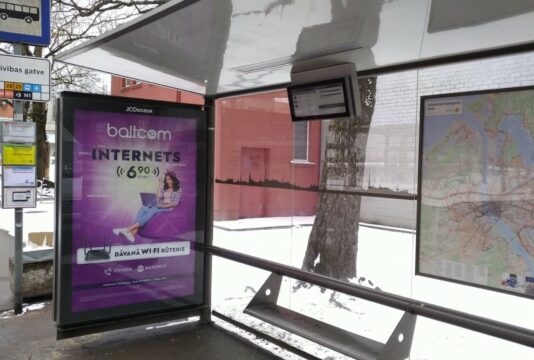
Rīgas Satiksme (Riga municipality public transportation) achieves significant cost and carbon savings with Papercast e-paper
Rīgas Satiksme is further enhancing the travel experience for Riga’s Public transport users with the second…

We all know that bus services are vital to our public transport infrastructure and central to effective multi-modality. More people commute by bus than any other form of public transport, and every day around 35 million people use Bus Rapid Transit services globally.
This may seem impressive, but it has been recognised worldwide that there is immense potential for improvement. As governments set targets for increased bus ridership, operators relentlessly endeavour to improve both the perception and utilisation of bus services.
In an article by Forbes on the ‘Top Eight Reasons People Give Up On Public Transit’, six of the reasons listed could have been avoided with more effective use of real-time passenger information (RTPI).
RTPI provides accurate information on actual departure and arrival times, enabling passengers to more efficiently plan their trips and the transit agency to maintain or improve performance. With so much to gain, we are expecting to see unprecedented growth as we close the decade, with the global RTPI market expecting to reach USD 20 billion in 2019. Growth can be attributed to increasing reliance on smartphones, high urbanization rates and the escalation of related technologies.
At Papercast, we specialize in solar powered wireless e-paper digital bus stops, so in this article we will explore the 5 biggest benefits of RTPI with a slight biased towards using e-paper digital bus stops as the passenger information system.
In a nutshell, using digital bus stops to distribute RTPI offers a better quality of service and improves satisfaction. It is ideal for operators that want a more dynamic, speedy and effective way to keep passengers informed on accurate bus arrival times, get targeted messages to customers on time, improve the customer experience and increase ridership.
Providing access to real-time arrival information decreases the perceived and actual wait times for passengers and improves satisfaction. If passengers can learn about a delay before they arrive at the stop, they can make informed decisions about taking alternative routes or modes. One of the main passenger complaints is that the bus did not arrive as scheduled, many agencies have seen steep declines in customer complaints after implementing RTPI systems.
A report by the World Bank Group suggests that real-time transit tools also bring in new passengers. A 2012 study of the Chicago Transit Authority bus routes on which RTPI had been added found that the average daily ridership on those routes increased by 2%. Similarly, a 2015 study for New York City’s bus system also found that after three years, the increase in ridership attributable to the RTPI system totaled 2%, which translated into more than $5 million per year in additional fare revenue.
Gone are the days when a stopwatch, pencil and paper were needed to create or update timetables on bus routes. Timetables are often created using assumptions about traffic patterns which are inaccurate. Over time, even the most thoroughly researched timetables need updating as traffic conditions change. Not only does your RTPI system enable you to determine the real-world version of your bus service schedule, but you can instantly make adjustments and publish more accurate service information to your passengers. Which brings us on to…
From our analysis, we know that bus arrival predictions can be as low as 35% accurate in the 10-15 minutes before the bus is due and only 50% accurate in the 5 minutes before arrival. The debate is whether this is acceptable. We don’t think it is and in most cases, the passenger doesn’t either. Providing accurate real-time information helps passengers better plan their trips and minimise waiting times, which contributes towards a better customer experience. You can achieve more than a 30% increase in your estimated time of arrival predictions with advanced analytic solutions from Papercast, find out more here.
You need the best conceivable way to get your RTPI to your passenger at the bus stop. This is where we introduce our ground breaking digital bus stop passenger information solution using solar powered wireless e-paper displays.
With the leading design principle of exceptionally low energy consumption, we have developed Papercast’s e-paper display to deliver a far superior experience in a stand-alone solar-powered unit that can be installed literally anywhere, in hours. It offers an extremely economical replacement for legacy electronic systems and traditional paper timetables, while providing the ideal technology platform for smart city public transport information solutions.
Operators can expect to achieve the following by installing Papercast’s e-paper based passenger information systems:
Are you considering replacing your existing passenger information system? Do you need to reduce the use of outdated paper timetables across your network? Are you committed to improving the passenger experience and increasing service utilisation? Get in contact today to find out why our future-proof e-paper passenger information bus stop is the answer.
“Working with you to improve customer experience and overall utilisation of public transport by keeping passengers more reliably informed, by helping as many service providers as possible to transition to next generation technologies”

Rīgas Satiksme is further enhancing the travel experience for Riga’s Public transport users with the second…

Papercast’s solar and battery-powered e-paper displays are built to last, even in the harshest of…